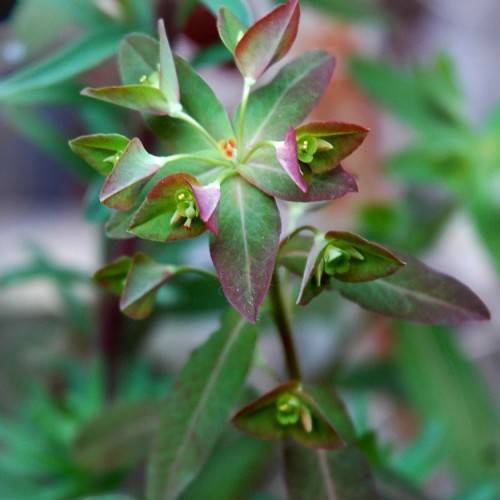
spurge
Euphorbia dulcis 'Chameleon'
Cycle:
Herbaceous Perennial
Watering:
Minimum
Hardiness Zone:
5 - 8
Flowers:
Flowers In Summer
Sun:
Filtered shade, Full sun
Soil:
Well-drained
Fruits:
Fruits Ready In
Growth Rate:
Moderate
Maintenance:
Low
Poisonous To Pets:
Yes
Drought Tolerant:
Yes
Salt Tolerant:
Yes
Care Level:
Medium
watering
Spurge (Euphorbia dulcis 'Chameleon') should be watered about once every 10-14 days; more if the soil dries out before then and less if the soil stays moist. Make sure the soil is moist but not sopping wet to prevent root rot and other issues. Avoid leaving the soil soggy for long periods of time or watering too frequently. In addition, the plant should do well with humid temperatures and occasional misting.
sunlight
Spurge (Euphorbia dulcis 'Chameleon') does best when placed in an area of the garden that receives full sun all day. This plant species should get at least 6 to 8 hours of direct sunlight per day. Morning sun is preferable to afternoon sun, as it can become too hot and cause the leaves to become scorched. During the summer months, it is important to provide a bit of shade from the hottest mid-day sun if you are located in a region with extremely hot temperatures.
pruning
The spurge (Euphorbia dulcis 'Chameleon') should be pruned twice a year. Prune in early spring, before new growth begins, and again in late summer once flowering has finished. When pruning, remove any dead, dried out, or crossed stems as well as any that are particularly tall or lanky. Cut stems back by no more than 1-third of their total length to promote new growth and a bushy, compact shape. Additionally, thin out any overcrowded areas to improve air circulation and light penetration. Pruning can be done with either hand pruners or loppers. It is important to make sure the pruning tools are both sharp and clean to prevent any possible transmission of disease.
